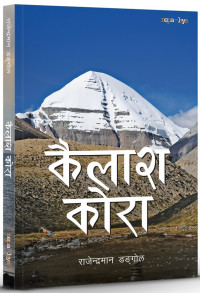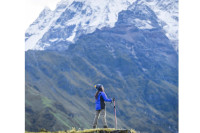Travel
In Mulkot, temperatures are high but the nearby Sunkoshi provides respite
But things started changing rapidly when the BP Koirala Highway was completed five years ago. The highway became the shortest route connecting Kathmandu to the eastern Tarai, and Mulkot became a popular stopover for travellers, turning the sleepy village into a bustling town. Even vacationers from Kathmandu started trickling in.
Tsering Ngodup Lama
The first time I saw Mulkot was from the window of a fast-moving rusty microvan on the BP Koirala Highway, on my way to Janakpur. After rushing past nothing but several kilometres of green fields and scattered hamlets, the town of Mulkot came into view, almost out of nowhere. The town hosts a decent number of hotels, and that left me intrigued: what’s there to see and do in this tiny town that it requires so many hotels? From the end of the town, the highway took an incline, and as the microvan chugged up the hill, I got a much better view of the town. Beyond the few hotels that flanked the highway, there were lush green fields, and to the east of the town flowed the Sunkoshi, a river that originates in Tibet. I knew I had to visit—one day.
It was seven months after this fleeting encounter with Mulkot that I finally returned to seek answers. The afternoon that I reached Mulkot, the temperature was an exasperating 33 degrees Celsius. The air was warm, heavy and humid. Deepak Khadka, manager of the Taj Riverside Resort, suggested that summer afternoons like these were best spent relaxing indoors. I was happy to comply with his suggestion. So I retreated to my room, read an essay that I had planned to get to a month ago, and then drifted off to sleep.
When I woke up from my nap, it was already 3 pm, and still brutally hot. I made my way to a tiny cafe, where local men were watching a group of workers install a 200 Kva electric transformer.
“Can you believe that just five years ago none of these hotels and modern buildings existed here? Mulkot used to be just another village and most of the buildings were traditional houses,” said Manoj Shrestha, a local and managing director of the resort where I stayed.
But things started changing rapidly when the BP Koirala Highway was completed five years ago. The highway became the shortest route connecting Kathmandu to the eastern Tarai, and Mulkot became a popular stopover for travellers, turning the sleepy village into a bustling town. Even vacationers from Kathmandu started trickling in.
“Everything had to keep up with the rapid change, even this electrical transformer. Just a few years ago, to take care of the town’s growing electricity needs, we installed a 100 Kva transformer. But now even that’s not enough so we’re replacing it with a 200 Kva transformer,” said Shrestha.

Just before sunset, on Manoj’s advice, my friend and I headed to Dapkha Village, also known as Majhi Gaun, which lies on the other side of the Sunkoshi. On one side is Sindhuli district and on the other side is Ramechhap, Manoj had told me. After a five-minute walk from the resort, we crossed a long suspension bridge and entered Ramechhap. The day’s heat had abated, and a cool breeze blew from the lush Sunkoshi. From the end of the bridge, we watched the setting sun reflect on the river, lending it a golden hue. For those few minutes, the Sunkoshi—literally ‘river of gold’—lived up to its name.
On a narrow dusty path that begins from the end of the bridge and leads to Dhapka village, we met 59-year-old Buddhiman Majhi, a rail-thin man, who agreed to show us around the village.
Dhapka is set on a sloping hill. To the east is the under-construction Mid-Hill Highway, which, when complete, will be 1,776 kms long and will run from east to west. And to the west is the Sunkoshi. Between the road and the river are the village’s 46 houses. The earthquakes of 2015, said Majhi, damaged many houses in the village. Only a few traditional thatched-roof homes are still standing, the majority of the houses are newly built ones with shiny blue tin roofs.
“Except for one family, all 45 families in the village belong to the Majhi caste. For a very long time, the villagers made their living by rearing pigs, fishing and ferrying people across the river on narrow wooden boats,” said Majhi. “We farmed our lands, but with no irrigation facilities and no technical knowledge, our fields produced very little yield. Our people lived a very impoverished life.”
More than a decade ago, two villagers were swept away by the river in a boat accident, Majhi told us. Then, the government built the bridge and the aid agencies came. Things started to improve.
Today, the village has a community-run solar-powered irrigation system and drinking-water system, both built by aid agencies.
Majhi also told us that three to four meetings are held daily to discuss challenges faced by the villagers, on everything from irrigation to health. “Quality of life has improved, and more village children are now attending school,” said Majhi.
By the time Majhi was done showing us around the village, the sky had turned an inky blue. It was getting dark. Majhi insisted that we visit his home and try his homemade tamarind juice. The juice, served in thick beer glasses, was both sweet and sour. One of Majhi’s neighbours, a tall thin woman, said that tamarind juice is much better than any carbonated soft drinks. My friend and I nodded our heads in approval.
Early next morning, we hiked to Sasra Dham, a temple to Shiva. Legend has it that a few generations ago, milk dripped from the ceiling of the cave where the temple is housed.
“My grandparents have told me about the milk dripping, but I have never seen it myself,” said our hike guide. According to stories that he had heard, the milk stopped dripping after a Brahmin man collected it and made kheer. Another villager told us that a menstruating woman had visited the temple, leading the milk to dry up.
 The hiking trail that leads to Sasra Dham is flanked by a gorge with an ankle-deep stream. Photo: Tsering Ngodup Lama
The hiking trail that leads to Sasra Dham is flanked by a gorge with an ankle-deep stream. Photo: Tsering Ngodup LamaFor the first 20 minutes of hike, we walked in a gorge, by the banks of an ankle-deep stream. The only sounds were our footsteps, birdsong, and the comforting burbling of the stream. Soon, the hills that formed the gorge gave way to terraced fields with waist-high corn and a few houses. It was one of the most beautiful trails I had ever hiked on.
A little over an hour into the hike, we reached the temple. The ceiling of the cave was lined with white stalactites and calcium carbonate in the soil had turned even exposed tree roots ashy white. Much to our disappointment, there was neither milk dripping from the ceiling nor water.
Later that afternoon, a few hours before we left for Kathmandu, we decided to do one more thing: head to a river island a five-minute walk from the resort. It wasn’t an easy walk. The noon sun was blistering; the stones on the river bank were hot, and so was the white sandy beach. But as we sat under the shade of one of the trees on the island, the air grew cool as a gentle breeze blew in from the river. We spent around 30 minutes lolling about in the calm and watching the river’s waters lap against the bank. I thought about how the stay had been too brief to my liking, but long enough to have my questions about this middle-of-nowhere town answered.
The Taj Riverside Resort is one of the better resorts in town, just 13 kms from the holy Khadadevi Temple, and 33 kms from the historical Sindhuli Gadhi. The resort’s sister company Mountain River Rafting operates a 16 km rafting trip from Nepalthok to Mulkot. Rooms start at Rs 4,000. Contact: 9851088440, 01-6923476




 11.12°C Kathmandu
11.12°C Kathmandu










